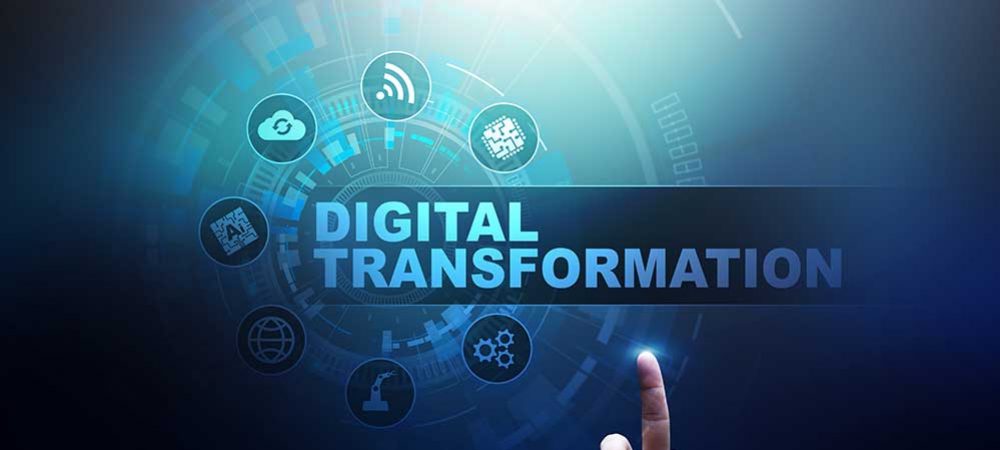Digital Transformation (DX) initiatives have accelerated this year due to the impact of the pandemic. Que Magnus, Product Marketing Manager, Micro Focus, and Gur Nedivi, Sales Director, Micro Focus Israel, tell us how organisations across the CEE region are leveraging digital tools to help them balance the two conflicting objectives of ‘run’ and ‘transform’.


Which stage are organisations in your region at in terms of their DX journeys and the tools they’ve been leveraging?
The past year has brought significant challenges to the IT world. Obviously, the pandemic has accelerated a digital shift that the world has never seen before. The rapid demand to enable remote workers and shift customer preferences towards remote interactions and real-time data has brought about fast-tracked Digital Transformations which many organisations are still navigating through.
Remote productivity tools made necessary by COVID-19 saw huge adoption gains last year and are most likely here to stay. But Digital Transformation is a multi-stage journey and most organisations have only scratched the surface of a complete Digital Transformation. The pandemic forced the beginning stages of transformation and now organisations need to look deeper to fully modernise.
Modernisation journeys will differ and will combine over time to achieve a greater whole. Such ambition is strategic, avoids the sharp turns that threaten Business Continuity and is programmed to address the three transformational challenges of applications, processes and infrastructure. For enterprises living the ‘new now’, Digital Transformation has become a strategic necessity.
Tell us about the four key outcomes that modern businesses – and your customers – are striving to achieve?
Our portfolio is finely tuned to help customers meet the four key outcomes they’re looking to achieve as they run and transform:
- Accelerate their application delivery: Reliably scale Agile and DevOps across all their environments, from mainframe to cloud – quickly bringing innovative ideas to life at the pace their business demands
- Simplify their IT transformation: Simplify the complexity of hybrid IT and transform into an agile, services-driven organisation
- Strengthen their cyber-resilience: Intelligently adapt their security to respond to an ever-evolving threat landscape and protect their company’s most important assets
- Analyse their data in time to act: Leverage Machine Learning so they can transform unlimited volumes of data into accurate, actionable and automated insights
How can organisations balance the two conflicting objectives of ‘run’ and ‘transform’?
There are two different ways organisations can move forward to run and transform at the same time. They could choose a risky rip-and-replace strategy and rip out much of what they’ve built up over time and start over.
There are benefits to that. They get bleeding Edge technology and can create exactly what they want.
But there can also be significant challenges with that option as starting over from scratch takes time and moving technologies and data comes with risks of downtime, losing information or exposing your organisation to new vulnerabilities. As we’ve seen in recent research, modernisation projects using an incremental and continuous improvement model achieve superior results when compared to other project-based approaches including the ripping and replacing of core business applications.
The alternative is to run and transform by bridging the existing and emerging – that means organisations leverage the investments they’ve already made and modernise some of the systems they have by adding new technologies that are integrated and backward compatible with them.
Ultimately, that delivers a very different outcome for organisations because:
• It allows them to build more quickly
• It leverages the investments they’ve already made so the incremental costs to transform are less
• It minimises the risks of impacting the processes and core business systems that they’ve been relying on for years
Given these two paths, at Micro Focus, our position is that most often the best approach for an organisation is to run and transform by bridging existing and emerging technologies.
How important is it that organisations prioritise ‘flexibility’ when making technology investments and how do your solutions enable this?
IT challenges are in a continuous state of change because the world is changing faster than ever. This requires IT teams to adopt a flexible approach to empower them to adapt. This applies very much to the application modernisation journey, where the obstacles to overcome and changes in the goals vary across time as part of a continuous process and technique, requiring the solution to have flexibility by design.
Micro Focus’ mission is to evolve this product portfolio to bridge now and next, protecting customer investment and adding the required flexibility onto the tools you have to address the continuously changing demands.
By adding options and alternatives across the portfolio, you’re able to take a flexible approach and create synergies to address the challenges with clear and simple solutions.
You can do that with Micro Focus technology, adding increased flexibility.
Why is cyber-resilience crucial for digitally transforming organisations and how does this ultimately enable innovation?
Exposing your business services to a wider audience is the formula for the growth of your company. This openness is not without risk, because you expose your IT to a wider number of people, devices and programs/apps.
The right balance of security and flexibility, ensuring harmony between IT and robust cyberdefences against intruders, is a must. This is an evolving challenge and resiliency is vital as you are required to continuously improve your cybersecurity in data, application and identities.
Our AMC technology is continuously updated to certify the highest standards of security, allowing you to keep up with the intruders’ attacks.
To remain relevant and a cornerstone of the enterprise, host systems must meet new demands for device connectivity and security. These host platforms play an essential role in Digital Transformation as the existing applications that run on these platforms are of high value to the business.
And it is essential to integrate these hosts with modern platforms to ensure effective application delivery. Security is an ever-evolving issue for mainframe organisations.
Challenges include new regulations, increased attacks and breaches, and ensuring appropriate employee access. So keeping core systems secure – even those buried deep within the organisation – is not easy. However, recent sensitive data breaches prove that additional security measures must be a priority.
As such, organisations must implement security measures such as Multi-Factor Authentication (MFA) and integrate them with host systems to ensure that these systems remain secure and comply with regulatory demands. By doing so, the mainframe will be protected and connected and will be part of the connected, digital, hybrid IT world.
Can you highlight any examples of how you’ve worked with customers in this region and the benefits they’ve experienced as a result?
We have been working with multiple financial institutions in central and eastern Europe to modernise their application capabilities, by modernising legacy UNIX based COBOL applications into new Visual COBOL environment, running on RHEL.
With this move, we’ve enabled customers to realise three main benefits:
- HW refresh, so they can enjoy more robust server performance with substantially lower TCO
- OS refresh, allowing customers to benefit from all the modern features of state-of-the-art Linux environment
- Complete CI/CD environment, with full IDE feature support
Looking ahead, which industry trends do you believe will impact the regional market and how should organisations be preparing/responding?
The transition to cloud will impact regional markets as more and more data centres will be closed and IT services will be provided as a utility from the cloud. This will drive companies to also move their core applications to the cloud and Micro Focus is ready to help customers do that, while modernising their development environment.
Can you give us some insight into Micro Focus’ regional plans for the coming year?
With the strategic agreement Micro Focus has with AWS, we are ready to support our customers in transitioning their applications to state-of-the-art secure and robust cloud-based infrastructure, while protecting their existing investment into core business applications.
Click below to share this article

